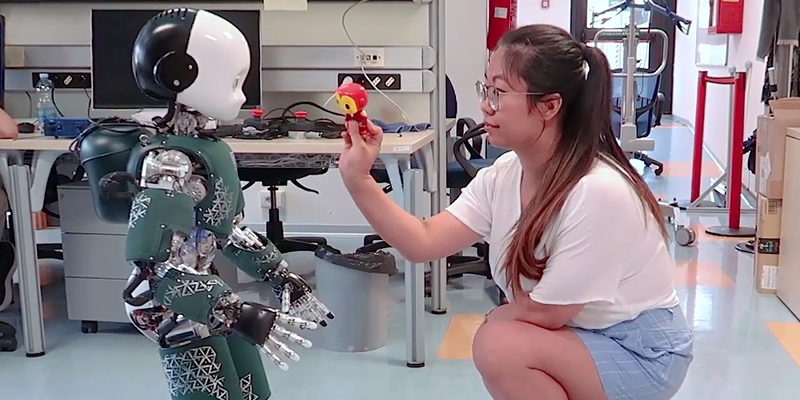We shouldn’t say iCub — the humanoid robot from Italy — is creepy. After all, human-like robots are in their infancy and an early computer or automobile would hardly be indicative of where those industries would take us. You can see the little guy in the video below.
The effort is open source and was part of an EU project that has been adopted by 20 labs around the world. The video just shows a guy in VR gear operating the robot, but the website has a lot of technical information if you want to know more.
The robot has 53 motors and has vision and audio sensors along with other sensors like accelerometers and gyroscopes. The robot is meant to be the size of a three and half year old child. We don’t know why. There are many projects based on the hardware including Darwin which is trying to develop a robot that can assemble and disassemble complex objects and another project aimed at giving the robot linguistic skills.
We couldn’t help but notice that the operator’s motions were not replicated by the robot. Instead, walking forward was more of a cue that the robot should also walk forward. We get why this is, but it is also fairly inefficient. We get the cool factor of you walk and your avatar walks, but if you have to take 20 steps to the avatar’s one childlike gait, you are going to wear out pretty quickly.
iCub shouldn’t be too lonesome. There’s Poppy, of course. Although, he might be a little lonesome since Asimo retired.















Yes the relationship between the operator and the robot seemed to be very disjointed – it’s control seemed rather disappointingly vague.
My guess regarding the size: people make affordances for small children. You don’t expect them to have the same abilities as an adult. The robot appearing to be a toddler means that many (most?) people will expect it to behave like one, so quirks in movement or whatever are excused and don’t seem out of place.
And, like human children, it has its butt closer to the ground.
Just feed them helium.
Poppy? https://www.youtube.com/watch?v=Y4nHLHDtyVA
more like Blinky ;D
https://www.youtube.com/watch?v=P0lKDy6E918
a toddler is safer to experiment with compared to a full size robot. For instance if it falls over, a full size robot may injure somebody.
Or injure itself. Looking at my own children, they just don’t have too far to fall. It would be interesting to know just how much of our injuries are caused by soft tissue meeting a sudden stop. And how much is a used by soft tissue being squashed by the rest of the still moving soft tissue. Having a low mass has its benefits.
Children are usually running around not walking… I guess this little one can experience that yet…
Small size requires less power and lower cost (like smaller motors). As the project is open, this should help financing locally the developments for those countries or institutions with limited resources. Also some parts are 3D-printable and small size helps here also.
They made it a practical size, for the intended purpose, which seems to be remotely controlled way to interact with the surroundings. Much larger, and they would be stepping up to more expensive and harder to source hardware. Going smaller would be similar, not too mention more difficult to take a part, to make repairs or upgrades. The software will continue to improve, as they work with it, but I wouldn’t expect human like motion or reflex, motors aren’t muscles, work differently. There will likely be some degree of delay, and jerkiness, as what the operator is directing, has to be translated into the scale of the robot, orientation sensors will need to make corrections, to keep it standing. You’ve got to start some place, learn from it, then start again on a better version, just part of the process.
Okay, why hasn’t any body brought up jokes about robotic kiddie pr0n?
Yet another robot that shuffles around with bent knees. Robot walking with knees that fully straighten is a long solved thing, so why does anyone still build humanoid robots that can’t straighten their knees?